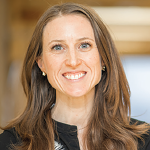 “Fifty percent of kids with rheumatic disease are taken care of by adult providers,” says Jay J. Mehta, MD, MS, attending physician and fellowship program director, Department of Rheumatology, Children’s Hospital of Philadelphia, and a co-author of the ACR’s recent pediatric workforce shortage study.1,2 “But adult rheumatologists may not have specific training in the rheumatic conditions that uniquely affect children or in the unique physical and psychosocial aspects of chronic disease in childhood. They may not have knowledge of medication dosing in children and could under- or overtreat as a consequence.
“Fifty percent of kids with rheumatic disease are taken care of by adult providers,” says Jay J. Mehta, MD, MS, attending physician and fellowship program director, Department of Rheumatology, Children’s Hospital of Philadelphia, and a co-author of the ACR’s recent pediatric workforce shortage study.1,2 “But adult rheumatologists may not have specific training in the rheumatic conditions that uniquely affect children or in the unique physical and psychosocial aspects of chronic disease in childhood. They may not have knowledge of medication dosing in children and could under- or overtreat as a consequence.
“Additionally, the wait times for some of these pediatric rheumatologists can be months. Arthritis can cause significant growth issues within months. Untreated lupus can cause kidney failure within months,” he continues.
These are the very real consequences of the situation that currently exists: The U.S. has too few pediatric rheumatologists to care for the number of children who need care for rheumatic conditions—and that gap is only expected to get worse.
The Scope of the Problem
Similar to workforce shortages in adult rheumatology, shortages in the pediatric rheumatology workforce have long been a concern. A 2006 study by the American Board of Pediatrics reported a total of 200 board-certified pediatric rheumatologists in the U.S., with only three pediatric rheumatologists per million children and none practicing in 14 states.3
In 2007, Sacks et al. estimated that nearly 300,000 children in the U.S. have significant pediatric arthritis and other rheumatic conditions. The researchers’ estimate of the annualized number of ambulatory healthcare visits was 827,000.4
An ACR U.S. rheumatology workforce study report on the supply and demand of rheumatologists from 2005–25 projected the demand for pediatric rheumatologists in 2025 would exceed the supply by 191 pediatric providers.5
The ACR’s report on the pediatric rheumatology workforce states that the pediatric rheumatology workforce in 2015 was estimated at 287 full-time equivalent (FTE) pediatric providers, while the estimated excess demand was 95 providers (33%). Correll et al. state: “The projected demand will continue to increase to almost 100% (n=230) by 2030 if no changes occur in succession planning, new graduate entrants into the profession and other factors associated with the workforce.”1
Colleen K. Correll, MD, MPH, assistant professor in the Division of Pediatric Rheumatology at the University of Minnesota Medical School, Minneapolis, and the corresponding author for the recent study, says the current shortage and future projections of a workforce shortage for pediatric rheumatologists come as no surprise to providers and patients alike.



